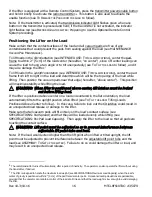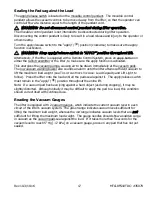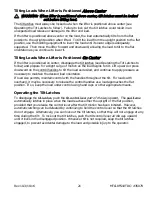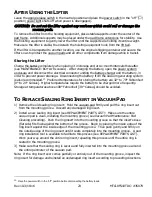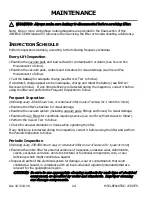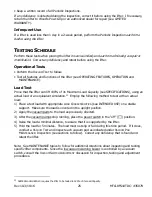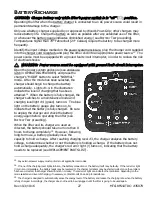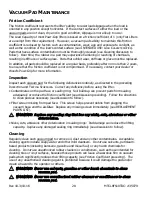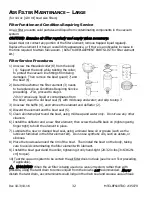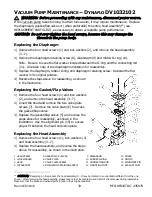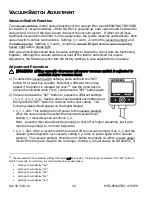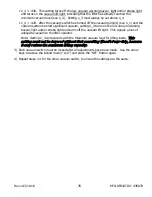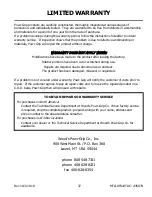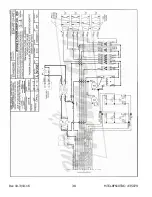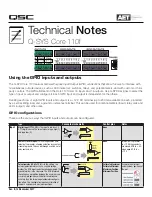
Rev 10.3/10-16
30
MTCL8FS10TDC: #35079
Dual Vacuum Circuit Test
Two vacuum system circuits allow the lifter to maintain the vacuum level in one circuit even if an
unexpected vacuum loss occurs in the other one. Verify the function of the circuits each time the
preceding V
ACUUM
T
EST
is performed and whenever a deficiency is suspected, as follows:
1) Clean the vacuum pads and apply the lifter to the test material as previously directed.
2) After the vacuum pumps stop running, monitor the vacuum gauges as a leak is introduced in
one circuit. To introduce a leak, partially disconnect or connect one of the quick connectors
until the vacuum circuit begins to leak. The corresponding vacuum gauge should indicate a
loss of vacuum in that circuit.
3) As the vacuum level decreases in one circuit, continue to monitor the vacuum gauge for the
other circuit, to make sure that it maintains its original vacuum level.
4) Repeat steps 1-3 as needed to verify the function of the second circuit of the vacuum system.
Be sure to introduce the leak at a vacuum pad belonging to the second circuit.
Correct any deficiency in the vacuum system before using the lifter. Contact Wood’s Powr-Grip
or an authorized dealer for assistance.
R
EMOTE
C
ONTROL
S
YSTEM
T
EST
If the lifter is equipped with a Remote Control System, perform this test in the environment
where the lifter is normally employed. Use the radio transmitter to activate each of the remote
functions.
Vary the location and distance of the transmitter in relation to the lifter, to ensure
that transmissions are effective in a variety of circumstances. This may require assistance from
someone near the lifter, to verify that functions are being performed as intended.
If the Remote Control System does not function correctly, review the following potential causes
of malfunction and correct them as directed:
• The battery for the radio transmitter may be worn out. Replace any expended battery (see
REPLACEMENT PARTS LIST).
• Metal or other electrically conductive surfaces may be causing interference between the radio
transmitter and radio receiver. Although the transmission signals often can bounce around
interfering surfaces, the signals do not travel through conductive walls. Reposition the
transmitter as necessary to transmit signals effectively.
If the preceding directions do not resolve a performance problem, repeat the test under different
conditions, to determine whether there is transmission interference in the work environment or
the Remote Control System is not functioning as intended. Correct any deficiency before
resuming normal use of the Remote Control System. If necessary, contact Wood’s Powr-Grip or
an authorized dealer for assistance.
18
Use a test material with appropriate surface characteristics (see INTENDED USE: L
OAD
C
HARACTERISTICS
) to test the apply and
release functions.
Summary of Contents for MTCL8FS10TDC
Page 2: ...View Quick Start Guide...
Page 40: ...Rev 10 3 10 16 38 MTCL8FS10TDC 35079...
Page 41: ...Rev 10 3 10 16 39 MTCL8FS10TDC 35079...
Page 42: ...Rev 10 3 10 16 40 MTCL8FS10TDC 35079...
Page 43: ...Rev 10 3 10 16 41 MTCL8FS10TDC 35079...
Page 44: ...Rev 10 3 10 16 42 MTCL8FS10TDC 35079...

